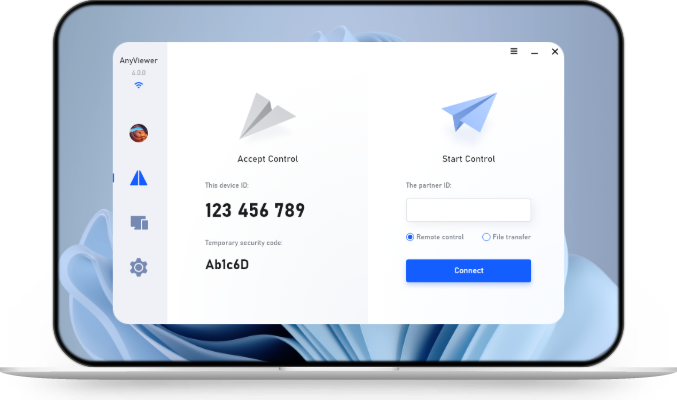The Ultimate Guide to Remote Video Monitoring: Enhancing Security Anywhere, Anytime
This comprehensive guide dives into the world of remote video monitoring, unveiling its benefits, functionality, and future trends. From enhancing security to real-time monitoring, discover how remote video surveillance monitoring is reshaping security management paradigms.
Introduction
In today's interconnected world, security is not a luxury but a necessity. With the rise of digital surveillance technologies, ensuring safety and protection has become more efficient and accessible than ever before. Remote video monitoring stands at the forefront of this revolution, offering unparalleled capabilities to enhance security anytime, anywhere.
Benefits of Remote Video Monitoring
Remote video monitoring offers a plethora of benefits that traditional security measures simply cannot match. Firstly, it provides enhanced security by offering a constant watchful eye over your premises. Whether it's your home, office, or public space, remote video monitoring systems enable you to monitor activities in real-time, deterring potential threats and facilitating quick responses to emergencies.
Moreover, remote video monitoring systems are incredibly cost-effective compared to hiring physical security personnel. With just a few strategically placed cameras and a reliable internet connection, you can have comprehensive surveillance coverage without the need for expensive manpower.
How Does Remote Video Monitoring Work?
At its core, remote video monitoring relies on a network of interconnected devices to capture, transmit, and store video data. These systems typically consist of high-definition cameras equipped with various features such as motion detection and night vision capabilities. The captured video footage is then transmitted to a central monitoring station or cloud-based server for storage and analysis.
One of the key components of remote video monitoring systems is their ability to provide remote access. This means that users can view live or recorded video footage from their smartphones, tablets, or computers, allowing them to keep an eye on their premises from anywhere with an internet connection.
Key Features to Look for in Remote Video Monitoring Systems
When choosing a remote video monitoring system, there are several key features to consider. Firstly, opt for high-definition cameras that can capture clear and detailed footage, even in low-light conditions. Additionally, look for systems with built-in motion detection capabilities, which can alert you to any suspicious activity in real time.
Another crucial feature to consider is remote access capability. Ensure that the system you choose allows you to view live or recorded video footage remotely, either through a dedicated mobile app or web interface. This ensures that you can stay connected to your security system at all times, giving you peace of mind wherever you are.
Applications of Remote Video Monitoring
The applications of remote video monitoring are diverse and far-reaching. In the realm of home security, these systems offer homeowners the ability to keep an eye on their property while they're away, providing peace of mind and enhancing overall safety.
In the business world, remote video monitoring plays a crucial role in safeguarding assets, preventing theft, and ensuring employee safety. By providing constant surveillance coverage, these systems enable business owners to monitor activities in real time and respond quickly to any security threats.
Future Trends in Remote Video Monitoring
Looking ahead, the future of remote video monitoring is filled with exciting possibilities. One of the most significant trends is the integration of artificial intelligence (AI) technologies into surveillance systems. AI-powered analytics can automatically detect and analyze suspicious behavior, significantly enhancing the effectiveness of remote video monitoring systems.
Additionally, we can expect to see a shift towards cloud-based solutions, which offer scalability, flexibility, and cost-effectiveness. By storing video footage in the cloud, users can access their data from anywhere, anytime, and easily scale their storage capacity to meet their changing needs.
Furthermore, advancements in the Internet of Things (IoT) are poised to revolutionize remote video monitoring. By integrating surveillance cameras with other IoT devices such as sensors and actuators, security systems can become more intelligent and proactive, responding to security threats in real time.
Conclusion
In conclusion, remote video monitoring represents a paradigm shift in the field of security management. By leveraging the power of digital surveillance technologies, these systems offer enhanced security, real-time monitoring capabilities, and cost-effectiveness. Whether it's protecting your home, securing your business, or ensuring public safety, remote video monitoring is a versatile and indispensable tool in today's interconnected world.
FAQs
Is remote video monitoring suitable for small businesses?
Absolutely! Remote video monitoring offers cost-effective security solutions that are ideal for small businesses looking to protect their assets and ensure employee safety.
Can remote video monitoring systems be integrated with existing security systems?
Yes, many remote video monitoring systems offer integration capabilities, allowing them to work seamlessly with existing security infrastructure such as alarms and access control systems.
How secure is remote video monitoring data?
Remote video monitoring systems employ robust encryption and security protocols to ensure that sensitive data remains secure and protected from unauthorized access.

